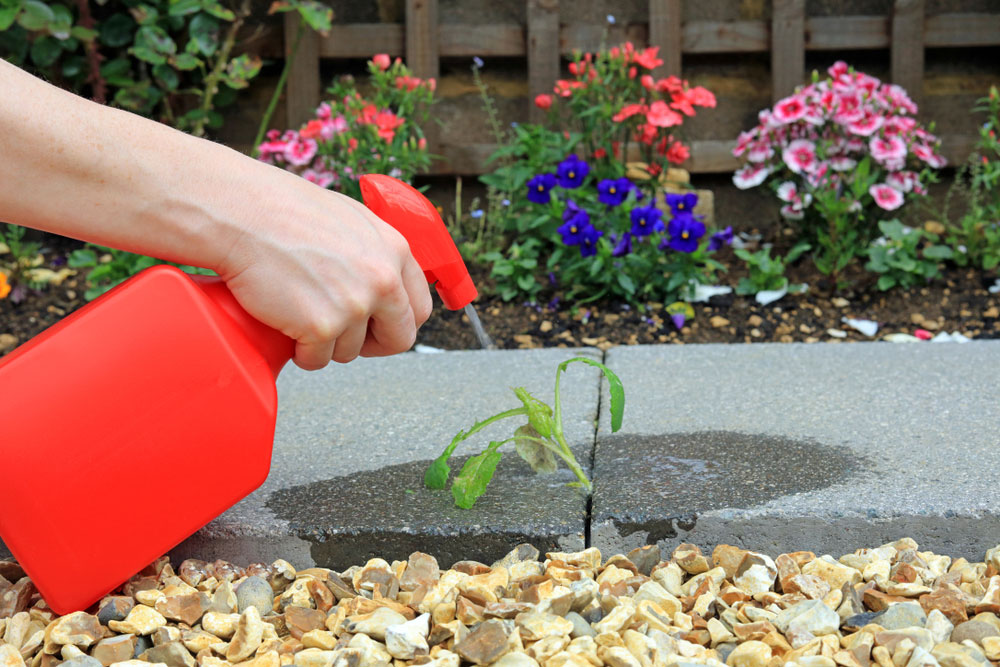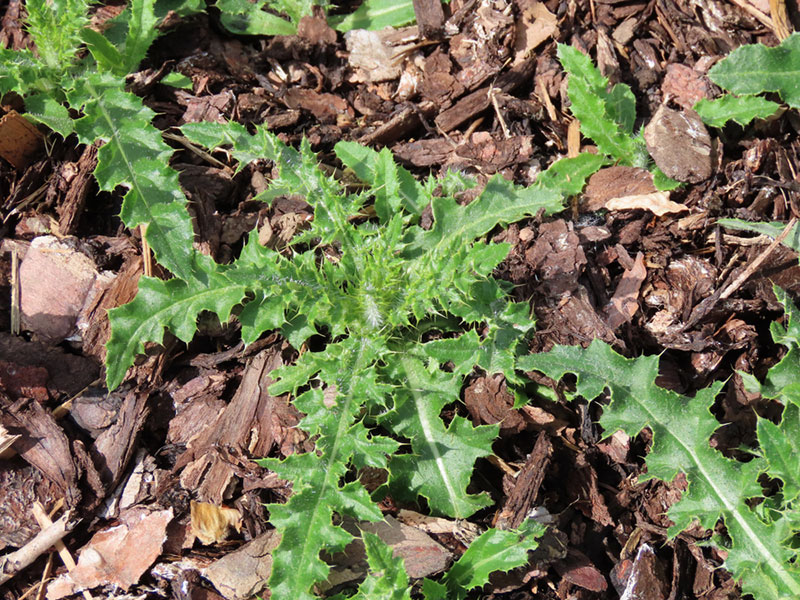
There is nothing more frustrating for anyone with a beautiful flowerbed or landscape than those pesky weeds wiggling their way up through your mulch. You spend way too much time and hard work creating beautiful scenery only to have it infiltrated by weeds.
Because we hate to see any fantastic gardens ruined by unwanted weeds, we put together a great guide to help you get rid of it once and for all. This article will provide various ways, along with how-to’s, to take control back over your flower beds.
Mulch is the Main Product Used for Weed Control
Mulch is usually the most commonly used product to control weeds in a flower bed or garden. So why are weeds still making an appearance?
Not Enough Mulch
Whether you are spreading your mulch thin to save a few bucks or to avoid making another trip, doing so will only make your work harder in the long run.
Many times, people do not add enough mulch to their landscape, and the sun can make its way through the cracks into the ground, allowing weeds to thrive.
As a rule of thumb, your garden will need about 3-4-inches deep of mulch to keep pesky weeds at bay.
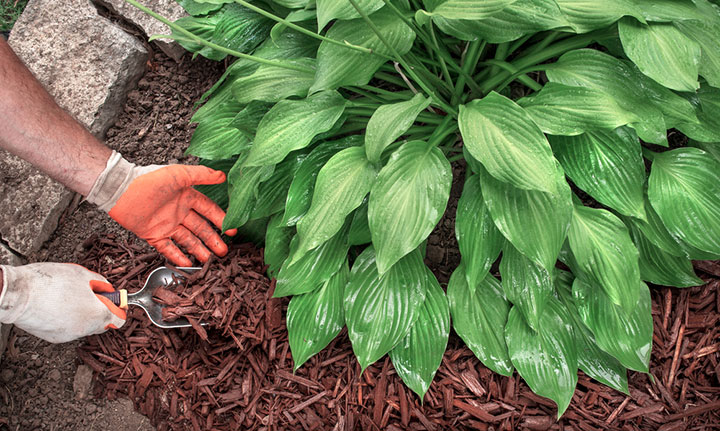
Poor Mulch Quality
If you are purchasing mulch that isn’t high-quality, you may be getting a lighter and not as effective product. High-quality mulch uses bark, woodchips, and sawdust making it a higher density and larger size, keeping weeds at bay.
Mulch is Too Old
If you have been using your mulch for many seasons, it has probably gone through significant weathering and traffic. As time goes on, mulch will start to wear down and will need replenishing. If your mulch starts to look worn down or washed (or blown) away, you should add more to the weaker areas.
If it is a high-quality mulch, the breakdown of its components is actually good for the earth and will not need to be removed, just raked into the ground with a fresh layer added to the top.
Getting Rid of Weed Growth in Mulch
There are a few different ways you can go about getting rid of the unwanted weed growth coming up through your mulch. Which option you choose should be based on personal preference and the severity of the issue at hand.
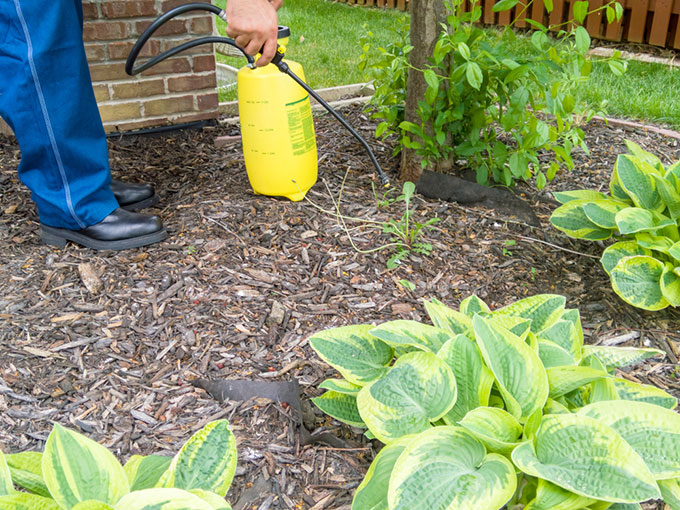
Here are a few ways to remove weeds from your mulch for good.
Weed Killers
You can purchase various weed killers online or in many home goods or department stores. There are options for many types of gardens and flower beds, so choose which one best suits your situation.
Steps for using weed killer:
- Remove all mulch from the flower bed or garden area
- Using a hoe or metal rake, remove all existing weeds and grass
- Loosen the soil and follow the directions provided on the weed-killing product, then apply the formula to the ground.
- Carefully put the mulch back into place, then spray some more of your herbicide to the top layer.
- Tip: make sure your herbicide will not harm your pre-existing plants before you use it.
If you have pre-existing plants and are concerned about the herbicide harming them, you can place a paper bag over them and leave them there until the formula has dried into the soil so it will not damage your plant’s leaves.
Weed Barrier Cloth
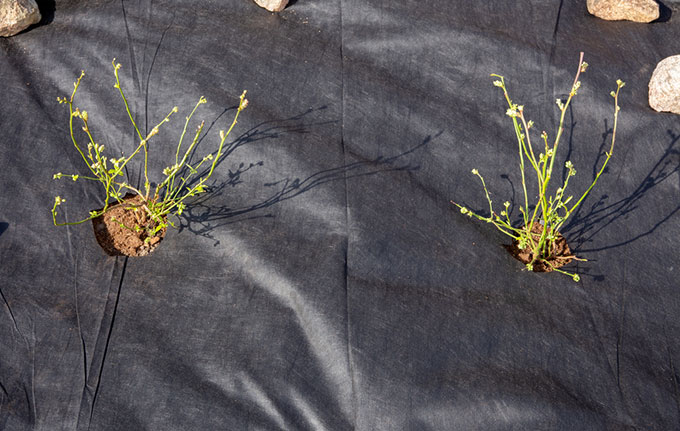
Consider a weed barrier cloth before you even lay your mulch down. However, this doesn’t mean you can use them afterward.
Steps for using a weed barrier cloth:
- If you have already added the mulch, remove it, and till up the soil, destroying all existing weeds and growing grass.
- Lay the fabric down on the soil, covering the entire space you plan to pour the mulch.
- Pat down the fabric so it is sitting securely on top of the fresh ground, and allow it to expand past the intended area you plan to cover with mulch.
- Now pour the mulch over the fabric covering all open spots.
- You can now trim up the fabric to make it align with your garden edges.
The Old Fashioned Approach
Sometimes, the best way to remove weeds from your mulch is simply getting on your hands and knees and pulling them. You should always pull from the bottom of the stem and remove as much of the root as possible. This approach may not be the most pleasant one, but it is the most effective and eco-friendly.





